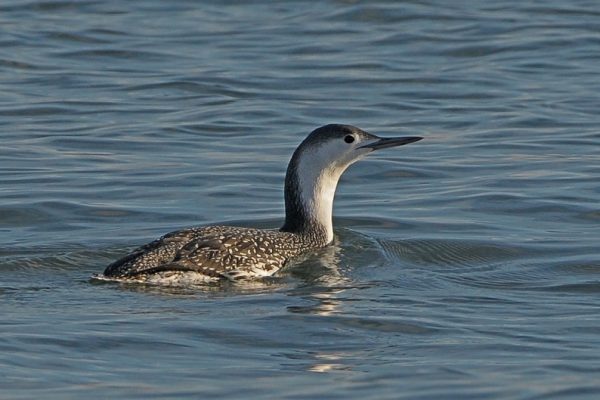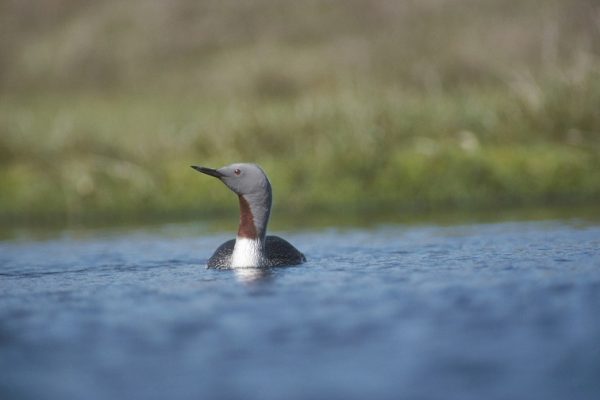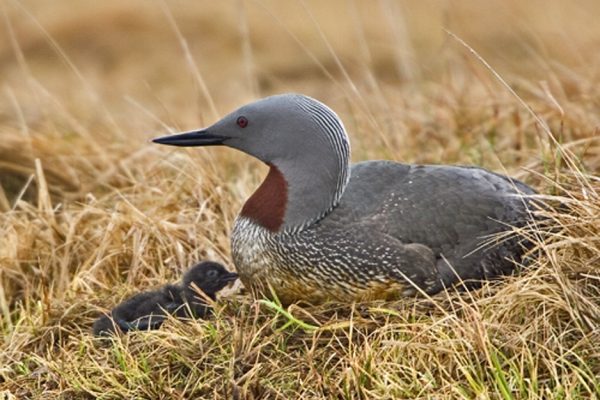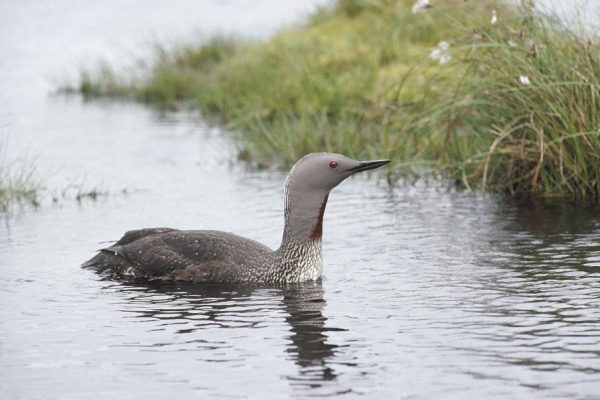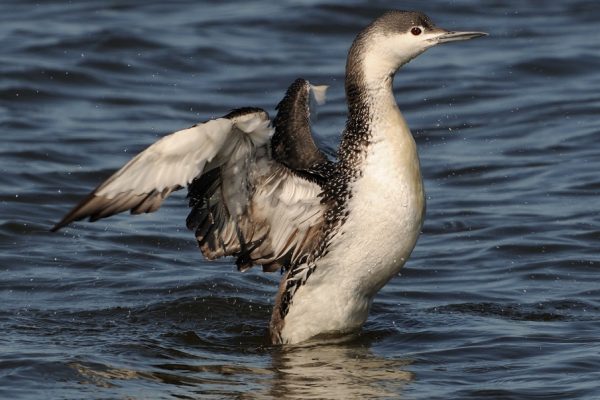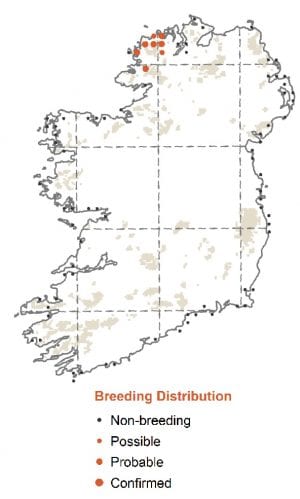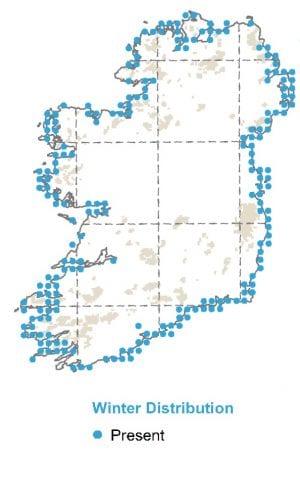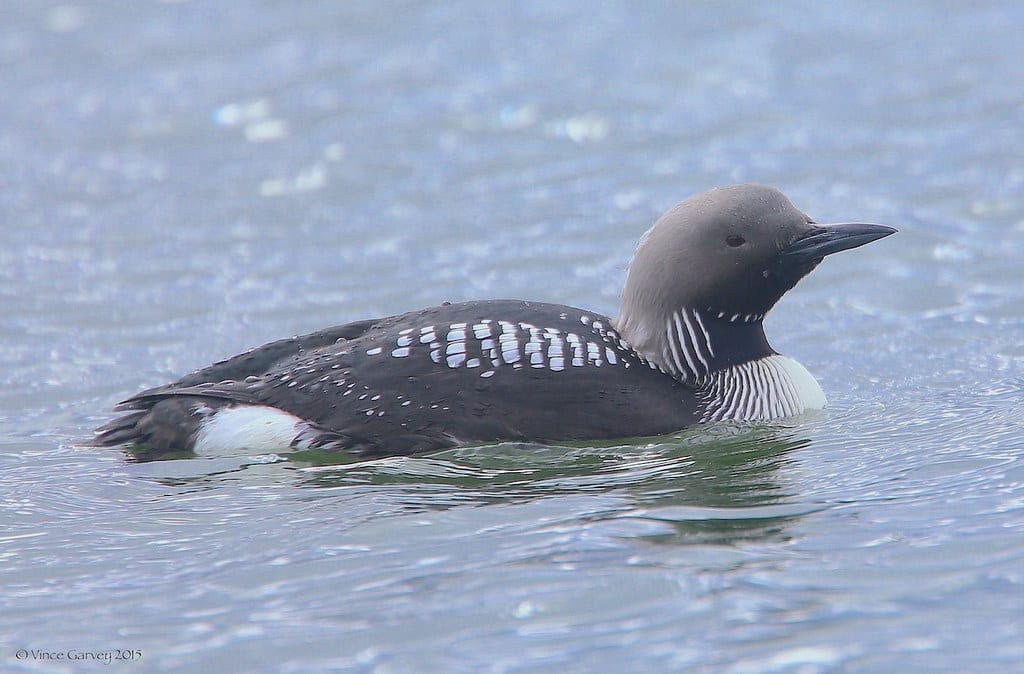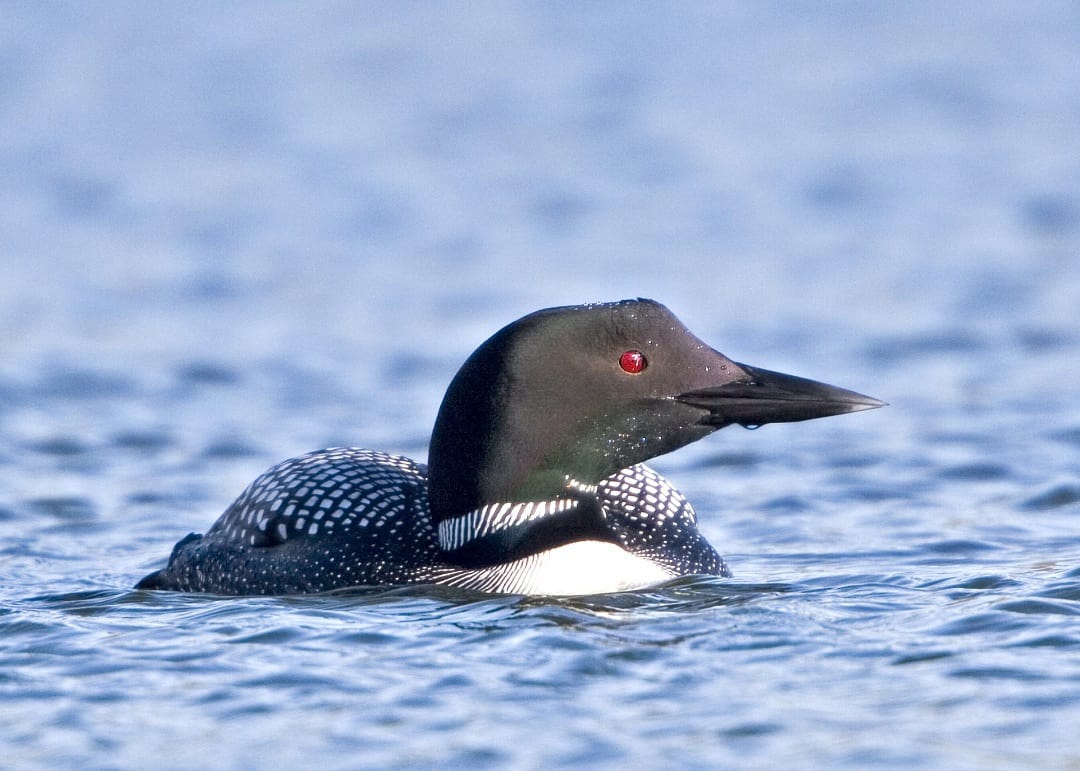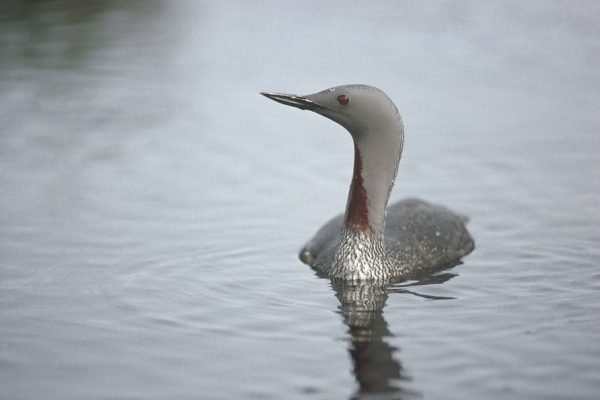
Red-throated Diver
| Irish Name: | Lóma rua |
| Scientific name: | Gavia stellata |
| Bird Family: | Divers |
amber
Conservation status
Conservation status
Status
Winter visitor to all Irish coasts from September to April. There is a very small breeding population in County Donegal.
Identification
Red-throated Divers are the smallest of the divers found in Ireland. The distinctive red neck develops in the build up to the breeding season (spring) and fades over the autumn. During the winter the neck plumage becomes more than half-white distinguishing Red-throated Divers from Black-throated Divers (50/50 white/black on neck). Other characteristic of this species are its grey-brown plumage and up- tilted bill, which birds usually hold pointing slightly upwards when on the water and in flight. Compared to other species of divers the Red-throated Diver has a flat chest, a thin neck, a light bill, a small head and a pale appearance. Usually birds swim low on the water but may float higher at times. They often jump up to dive and can stay underwater for over a minute. Red-throated Divers are more gregarious than other divers and small, scattered flocks on the sea during the winter are common.
Voice
A loud ‘goose-like’ call in flight and breeding pairs produce a ‘wailing’ call. Less vocal in winter.
Diet
Small fish such as sprats, sand eels, codling and flatfish. Other food items include fish spawn, frogs, shrimps, molluscs, water insects and annelids.
Breeding
Very few pairs breed in Ireland and these are restricted to Co. Donegal. In 2006 only three of six known territories were occupied and breeding success was low. Ireland is the most southerly breeding location in the species' range, with most of the northwest European population breeding in northern Russia, Scandinavian, Iceland and Scotland. In Ireland they breed on small fresh water loughs and pairs return to their breeding territories during April and March. Nests are typically a scrape lined with aquatic vegetation and constructed close to or on the waters edge, with the same sites often re-used in successive years. There is little food in the loughs used for breeding and adults have to travel to more productive waters at the coast to forage. Eggs and chicks are susceptible to predators such as Mink and breeding pairs are easily disturbed by human activity.
Wintering
This species is most numerous in Irish coastal waters out of the breeding season, although resident breeding pairs and non-breeding birds may be encountered during the summer. Red-throated Divers start to arrive in Ireland from their northern breeding grounds in September and winter numbers peak in January and February. During the winter they are well distributed around the Irish coastline and are typically associated with shallow sandy bays.
Monitored by
Blog posts about this bird
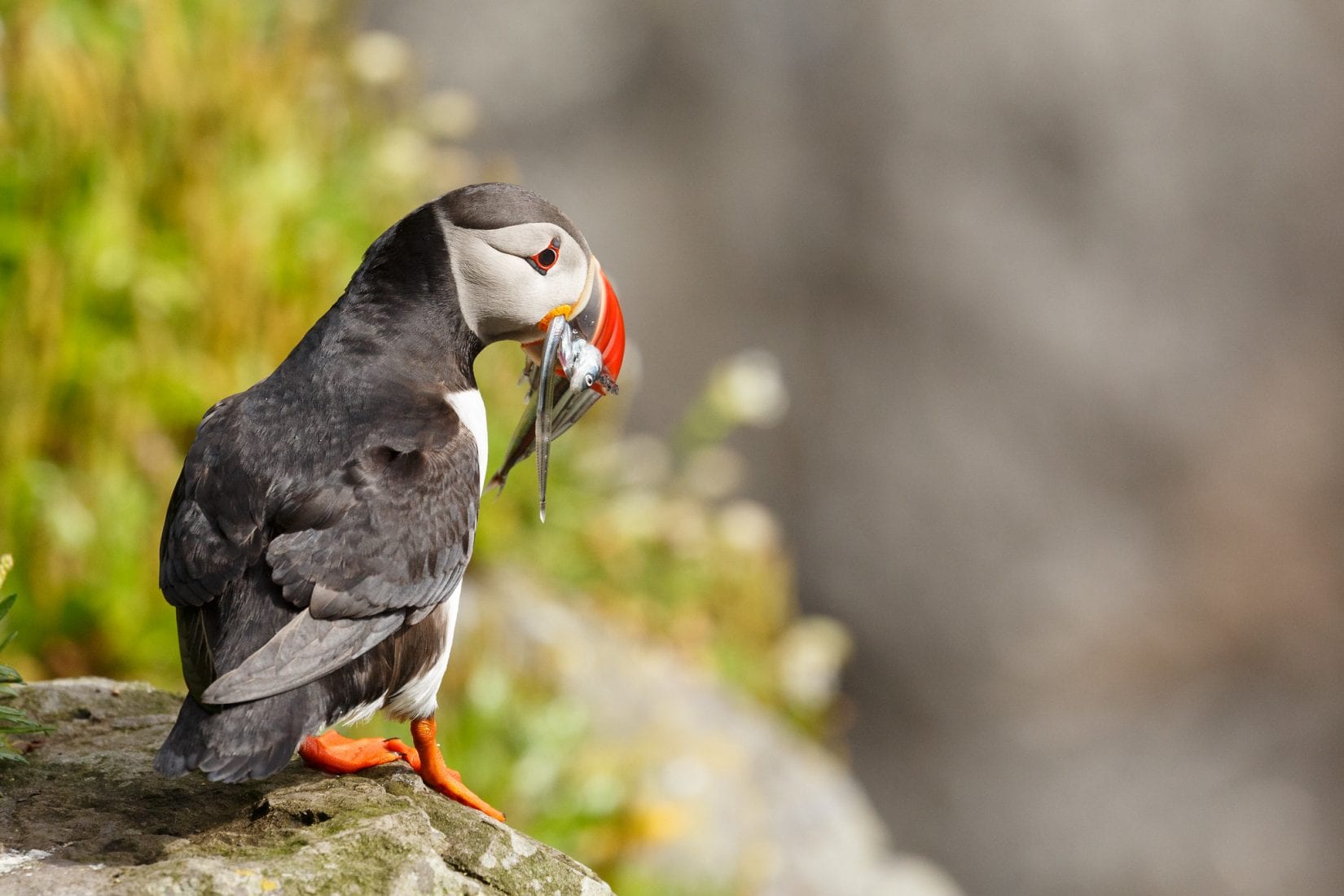
New protected area off Wexford coast is a step forward for vulnerable seabirds
The recent announcement of the new “Seas off Wexford” Special Protection Area (SPA) is certainly news to be welcomed.
For such a designation to be as effective as it can be, it is crucial that strong and effective conservation objectives and management plans are ambitious and that stakeholders are consulted throughout the process. It would be most welcome if the designation of new marine SPAs also led to a new vision for management of Ireland’s entire network of SPAs. BirdWatch Ireland calls on government to ensure that management plans are put in place for SPAs on both land and sea and that a whole-of-government approach is taken to implement them properly to safeguard the future of the birds they are intended to protect.
Minister for Housing, Local Government and Heritage Darragh O’Brien recently designated the new SPA of marine waters off the coast of Wexford which, at over 305,000 hectares, is the largest SPA designated in the history of the state. These waters provide extremely important food sources for seabirds, including Red-listed species such as Puffin, Kittiwake, Common Scoter and many other vulnerable Amber-listed species such as Fulmar, Manx Shearwater, Shag, Cormorant, Black-headed Gull, Lesser Black-backed Gull, Herring Gull, Roseate Tern, Red-throated Diver, Gannet, Common Tern, Little Tern, Sandwich Tern, Mediterranean Gull and Guillemot.



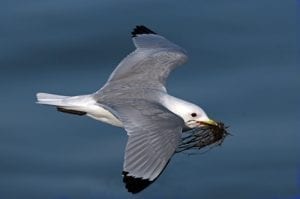
Kittiwake. Photo: Colum Clarke.
Under EU legislation, the Irish government has made a commitment to designate 10% of its waters as protected by 2025, and a total of 30% by 2030. This new designation increases the percentage of Ireland’s marine protected waters to 9.4%, just under the 2025 target. While this is certainly a step in the right direction, many questions remain, primarily, what will “protection” look like in practice? It is paramount that this is made clear in the soon-to-be-published SPA’s conservation objectives, which should detail the activities that will and will not be permitted in the SPA, among other measures. We look forward to reading them shortly. At the same time, BirdWatch Ireland in collaboration with BirdLife Europe and BirdLife International are mapping Ireland’s marine Important Bird Areas according to international and standardised BirdLife International criteria under a project funded by the Flotilla Foundation. This is an important time for our seabirds and it is welcome to see the government’s focus finally on setting out protected areas for them.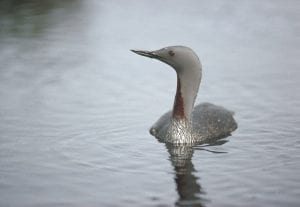
Red-throated Diver. Photo: Chris Gomersall
While the finer details about the Wexford SPA have yet to come to light, it is clear that certain activities will not be permitted in the Wexford SPA. The Minister has issued a Direction in relation to certain activities, which must not be carried out within or close to the SPA, unless consent is lawfully given. The listed activities are reclamation including infilling; blasting, drilling, dredging or otherwise disturbing or removing fossils, rock, minerals, mud, sand, gravel or other sediment; introduction or reintroduction of plants or animals not found in the area; scientific research which involves the removal of biological material; any activity intended to disturb birds; undertaking acoustic surveys in the marine environment and developing or consenting to the development or operation of commercial recreational/ visitor facilities or organised recreational activities.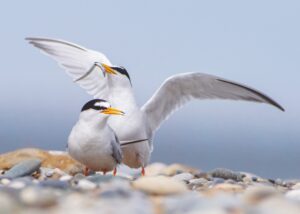
Little Terns.
Together with our partners at Fair Seas – a coalition of Ireland’s leading environmental NGOs and environmental networks of which BirdWatch Ireland is a founding member – we have been calling for the government to meet their targets, but this alone is not enough. More action must be taken in order for us to adequately protect these important marine habitats and the many species that they support. Any move to better protect important habitats for birds is to be welcomed, and this is certainly no different. We are urging the Irish government to be ambitious in their plans for this new SPA and stress the need for focused community engagement in the surrounding areas. We also continue our urgent calls for the publication of the long-awaited Marine Protected Areas (MPA) Bill.
